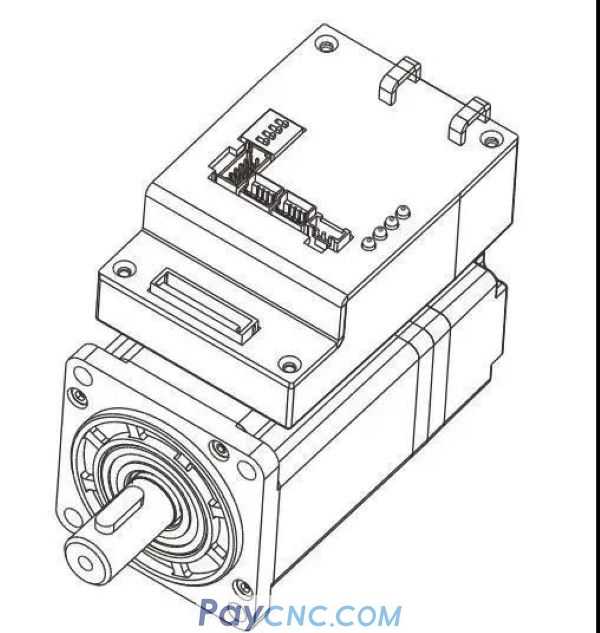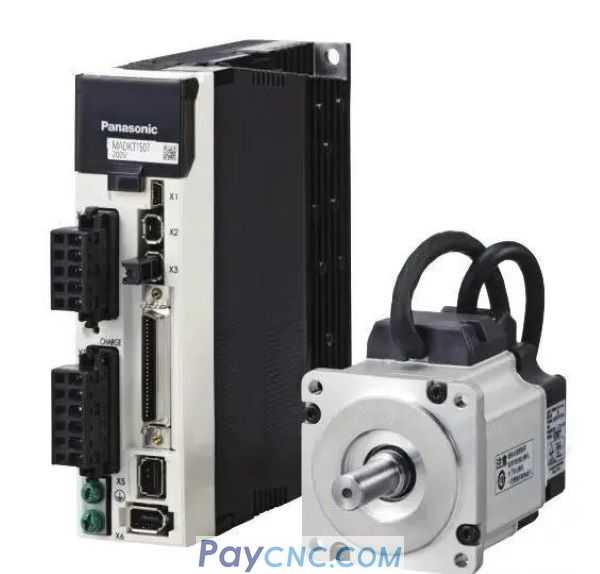Under what conditions will the servo motor shake? How can we solve the problems caused by the jitter of these servo motors? How are they resolved?

For example: if the acceleration/deceleration time is set too small, the servo motor will produce high inertia jitter when it suddenly starts or stops... Adjusting the acceleration/deceleration time separately can solve this problem.
The following is a selection of netizens' analysis of the reasons for the vibration of the servo motor for your understanding:
one
View One
When the servo motor jitters at zero speed, the gain should be set high, and the gain value can be reduced. If there is a jitter when starting, the alarm will stop, the most likely cause is the incorrect phase sequence of the motor.
two
View Two
1. When the PID gain is adjusted too large, it is easy to cause the motor to shake, especially after adding D, it is especially serious, so try to increase P and reduce I, and it is best not to increase D.
2. Vibration will occur even if the encoder wiring is incorrectly connected.
3. If the load inertia is too large, replace with a larger motor and driver.
4. The analog input port interference causes jitter. Add a magnetic ring to the motor input line and the servo drive power input line to keep the signal line away from the power line.
5. There is also a rotary encoder interface motor. Poor grounding can easily cause vibration.

Three
View Three
① Servo wiring:
a. Use standard power cables, encoder cables, control cables, and whether the cables are damaged;
b. Check whether there is an interference source near the control line, whether it is parallel to or too close to a nearby high-current power cable;
c. Check whether there is any change in the potential of the ground terminal to ensure a good grounding.
② Servo parameters:
a. The servo gain setting is too large, it is recommended to re-adjust the servo parameters manually or automatically;
b. Confirm the setting of the speed feedback filter time constant, the initial value is 0, you can try to increase the setting value;
c. The electronic gear ratio setting is too large, it is recommended to restore to the factory setting;
d. For the resonance of the servo system and the mechanical system, try to adjust the frequency and amplitude of the harmonic filter.
③ Mechanical system:
a. The coupling connecting the motor shaft and the equipment system is offset, and the mounting screws are not tightened;
b. Poor engagement of pulleys or gears can also cause load torque to vary. Try to run at no-load. If it is normal during no-load operation, check if there is any abnormality in the joint part of the mechanical system;
c. Check whether the load inertia, torque, and speed are too large, and try to run at no-load. If the no-load runs normally, reduce the load or replace the drive and motor with a larger capacity.

Wanton
Point four
Servo motor jitter is caused by malfunctions such as mechanical structure, speed loop, servo system compensation board and servo amplifier, load inertia, and electrical parts.
Five
to sum up
1. The jitter caused by the mechanical structure can be divided into two situations:
1) No-load jitter:
a. The motor foundation is not firm, the rigidity is not enough or the fixing is not tight.
b. The fan blades are damaged, destroying the mechanical balance of the rotor.
c. The shaft is bent or cracked. It can be solved by tightening screws, replacing fan blades, and replacing crankshafts.
2) If the jitter after loading is generally caused by the failure of the transmission device, it can be judged that the following parts have defects:
a. Unbalanced rotation of belt wheel or coupling.
b. The center line of the coupling is inconsistent, so that the motor does not coincide with the driven mechanical axis.
c. The drive belt joint is unbalanced. It can be solved by correcting the transmission device to balance it.
2. Jitter caused by the speed loop problem:
The speed loop integral gain, speed loop proportional gain, acceleration feedback gain and other parameters are improper. The greater the gain, the greater the speed, the greater the inertial force, the smaller the deviation, and the easier it is to produce jitter. Setting a small gain can maintain the speed response and is not easy to produce jitter.
3. Jitter caused by the failure of the servo system's compensation board and servo amplifier:
The motor suddenly stops when the power is cut off during the movement, which produces a lot of jitter, which is related to the improper setting of the servo amplifier BRK wiring terminals and improper parameters. The acceleration and deceleration time constant can be increased, and the PLC can be used to slowly start or stop the motor so that it does not shake.
4. Jitter caused by load inertia:
Problems with the guide rail and screw lead to an increase in load inertia. The moment of inertia of the guide rail and the lead screw has a great influence on the rigidity of the servo motor transmission system. Under fixed gain, the greater the moment of inertia, the greater the rigidity, the more likely it is to cause the motor to shake; the smaller the moment of inertia, the smaller the rigidity, and the less likely the motor is to shake . It is possible to reduce the moment of inertia and load inertia by replacing the guide rail and screw rod with a smaller diameter, so that the motor does not shake.
5. Vibration caused by electrical parts:
a. The brake is not turned on, and the feedback voltage is unstable. Check whether the brake is turned on, control the zero servo function by adding encoder vector control, and output a certain torque to solve the jitter by reducing the torque. If the feedback voltage is abnormal, first check whether the vibration period is related to the speed. If it is, check whether the connection between the spindle and the spindle motor is faulty, whether the spindle and the pulse generator installed at the end of the AC spindle motor are damaged. You should check whether the printed circuit board is faulty, and you need to check the circuit board or readjust it.
b. The sudden jitter of the motor during operation is mostly caused by the lack of phase. The focus should be on whether the fuse melt is blown, whether the switch is in good contact, and whether there is electricity in each phase of the power grid.
With the opinions analyzed by these netizens, do you have a general understanding of the reasons for the jitter of the servo motor during operation? In this case, you can investigate according to the reasons analyzed in the opinions of netizens. In addition, you can usually pay attention to these problems to avoid jitter when the servo motor is running.
|
 |
| Products Catalogue | Home | About Us | Retrofit | Download | News | Tech Support | Contact Us | |
|
|
|
